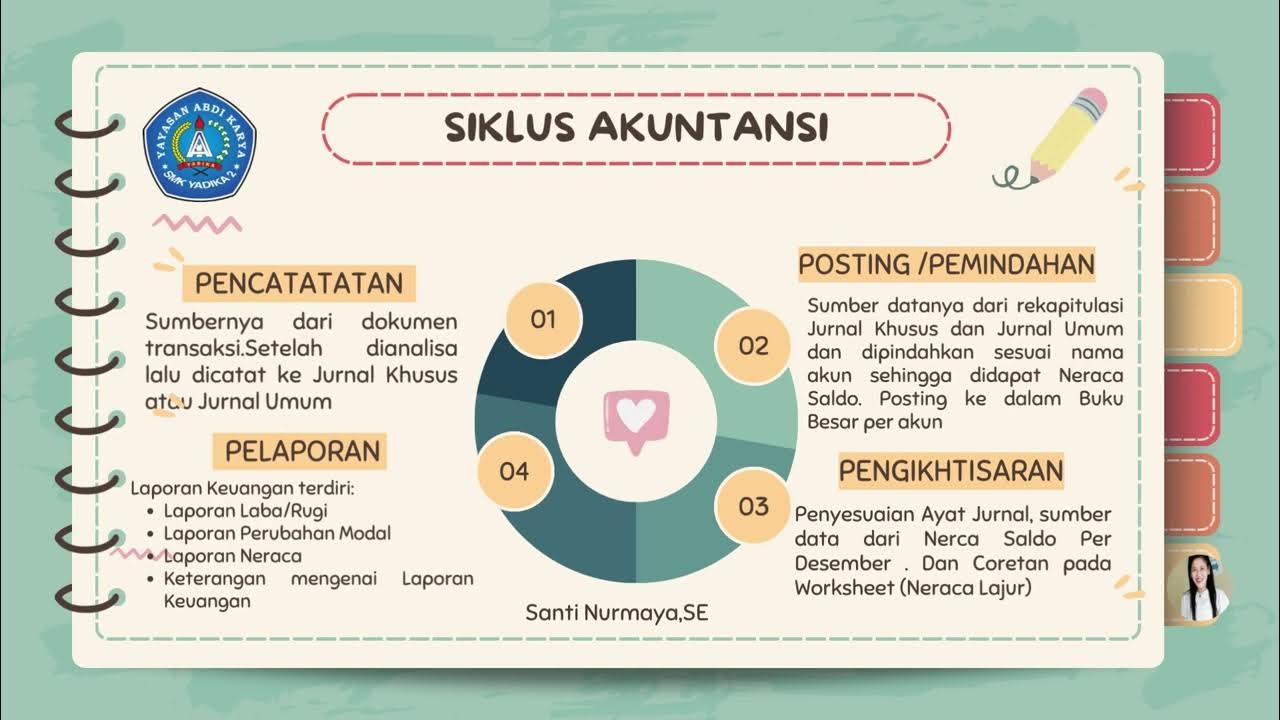SISTEM AKUNTANSI PIUTANG || @dafsofficial
Summary
TLDRThis video lecture delves into the accounting information systems related to accounts receivable, particularly focusing on procedures for recording accounts, such as credit sales transactions, cash receipts from debtors, sales returns, and accounts write-offs. The process involves maintaining subsidiary ledgers, posting to journals, and using documents like sales invoices and cash receipts. The lecture highlights essential management information, such as debtor balances, payment histories, and credit limits, to guide decision-making. It also touches on different accounting methods, including conventional and computerized systems, to track and manage receivables effectively, ensuring clear financial oversight.
Takeaways
- 😀 The accounts receivable system is a crucial part of the credit sales accounting system, tracking amounts owed by customers.
- 😀 Key procedures in the accounts receivable process include credit sales transactions, cash receipts from debtors, sales returns, and write-offs.
- 😀 Proper supporting documents like sales invoices, shipping bills, and payment receipts are essential for accurate recording in the system.
- 😀 Information such as customer balance, payment history, credit history, and aging of receivables is needed for management decision-making.
- 😀 Journals such as the sales journal, general journal, and cash receipt journal are used to record transactions related to accounts receivable.
- 😀 The accounts receivable ledger (Buku Pembantu Piutang) helps track individual customer balances and outstanding amounts.
- 😀 The system employs both conventional (manual) methods and computerized methods for posting transactions, with each having its own workflow.
- 😀 Transactions are processed with the use of flowcharts, helping to visualize the progression of credit sales, cash receipts, returns, and write-offs.
- 😀 Sales returns are recorded using credit memos, which adjust the amount owed by a customer when goods are returned.
- 😀 Management needs periodic reports such as the aging report to assess overdue receivables and evaluate credit policies for better decision-making.
- 😀 Different methods of posting transactions include daily or periodic posting, depending on whether the company processes updates frequently or on a schedule.
Q & A
What is the main topic of the lecture?
-The main topic of the lecture is the Accounts Receivable System, which is part of the broader Accounting Information System. It focuses on the procedures, documents, and methods involved in managing amounts owed by customers.
What are the key procedures for recording accounts receivable?
-The key procedures include recording credit sales transactions, cash receipts from debtors, sales returns, and bad debt write-offs. Each procedure involves specific documents and journal entries for accurate recording.
Which documents are commonly used in the Accounts Receivable system?
-The key documents include sales invoices, delivery orders, cash receipts evidence, credit memos for sales returns, and general journal entries for bad debt write-offs.
How is the aging of receivables useful in accounts receivable management?
-Aging of receivables is crucial for evaluating overdue accounts. It helps assess the effectiveness of credit policies and the success of collection efforts by categorizing accounts based on the length of time they have been outstanding.
What is the purpose of a credit memo in the accounts receivable system?
-A credit memo is used to record sales returns. It adjusts the accounts receivable balance when goods are returned by the customer due to defects or other reasons.
What are the different methods of posting transactions in accounts receivable?
-There are two primary methods: the manual (conventional) method, where transactions are posted manually to ledgers, and the computerized method, where transactions are automatically recorded and processed in real-time using software.
What is the role of the accounting department in managing accounts receivable?
-The accounting department is responsible for recording accounts receivable, maintaining records of customer balances, sending periodic statements to customers, and conducting aging analysis to monitor overdue receivables.
How does the computerized method improve the accounts receivable process?
-The computerized method improves efficiency by automating the recording and processing of transactions, reducing manual errors, providing real-time updates, and making it easier to generate reports and track accounts.
What is the significance of the sales invoice in the accounts receivable system?
-The sales invoice is a critical document that initiates the recording of a receivable. It provides details of the transaction, including the customer’s purchase, quantity, price, and total amount owed.
Why is it important to track customer balances in the accounts receivable system?
-Tracking customer balances is essential for monitoring outstanding amounts, assessing credit risk, managing cash flow, and ensuring that payments are collected in a timely manner to maintain financial health.
Outlines

This section is available to paid users only. Please upgrade to access this part.
Upgrade NowMindmap

This section is available to paid users only. Please upgrade to access this part.
Upgrade NowKeywords

This section is available to paid users only. Please upgrade to access this part.
Upgrade NowHighlights

This section is available to paid users only. Please upgrade to access this part.
Upgrade NowTranscripts

This section is available to paid users only. Please upgrade to access this part.
Upgrade NowBrowse More Related Video

AKM 1: 3-2 Pengakuan Piutang Dagang

Revenue Cycle Exaplined CPA Exam

SETTING LINKED ACCOUNT | PD MITRA

Mengelola Jurnal Khusus dan umum,Buku Besar, Laporan Keuangan Perusahaan Jasa,Dagang dan Manufaktur.

Myob Accounting UD. Buana || Input Transaksi No. 11 - 25 || Part. 5

[MEET 6] AKUNTANSI SEKTOR PUBLIK - TRANSAKSI PENDAPATAN LRA DAN LO
5.0 / 5 (0 votes)